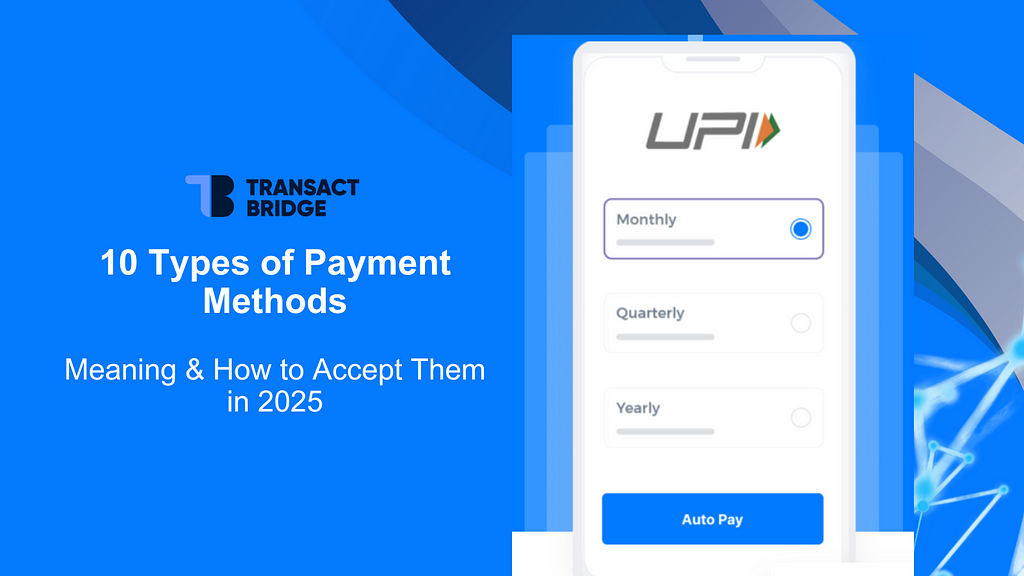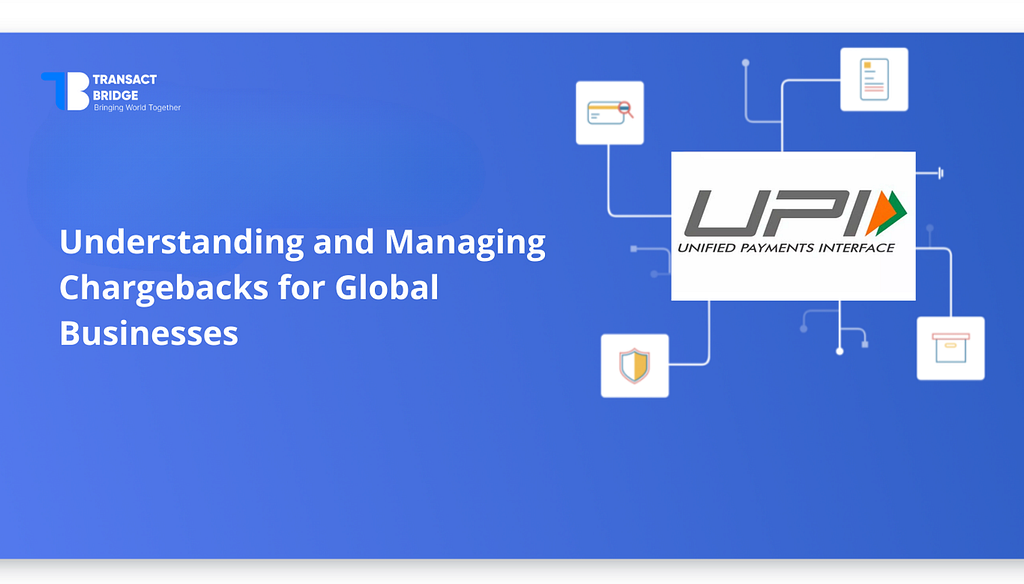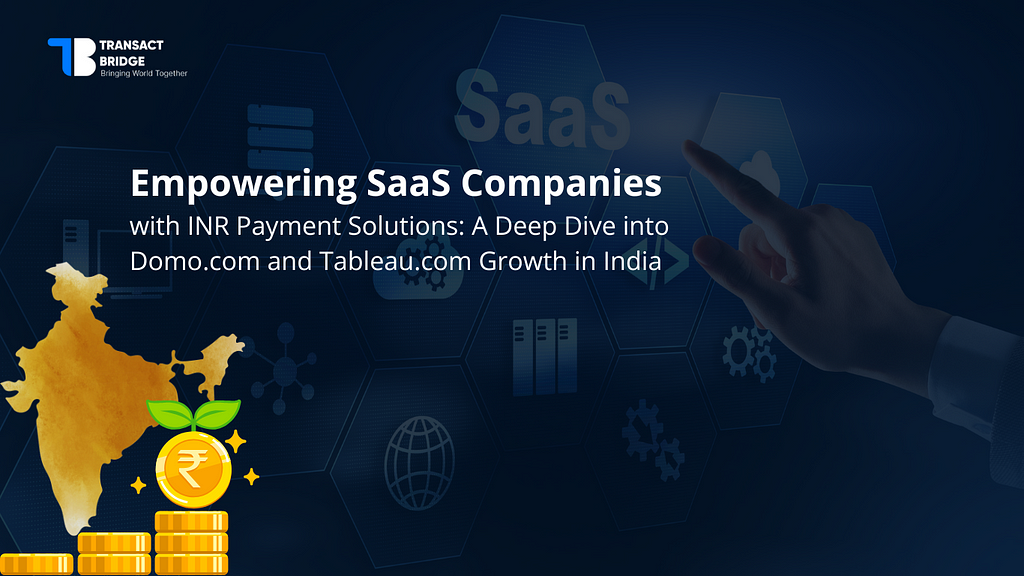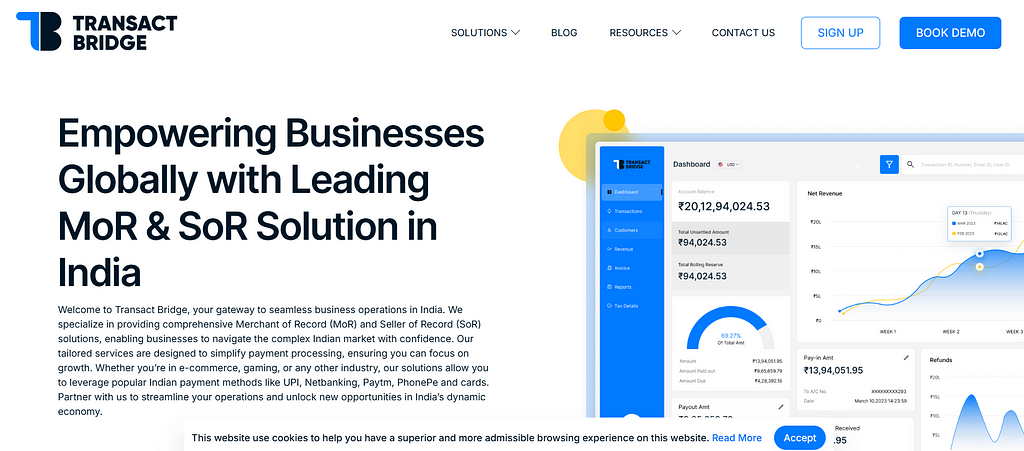
How Transact Bridge Avoids Needing a PA-CB License—and Why the MOR Model Still Matters
Published on: Wed 23-Jul-2025 06:00 AM
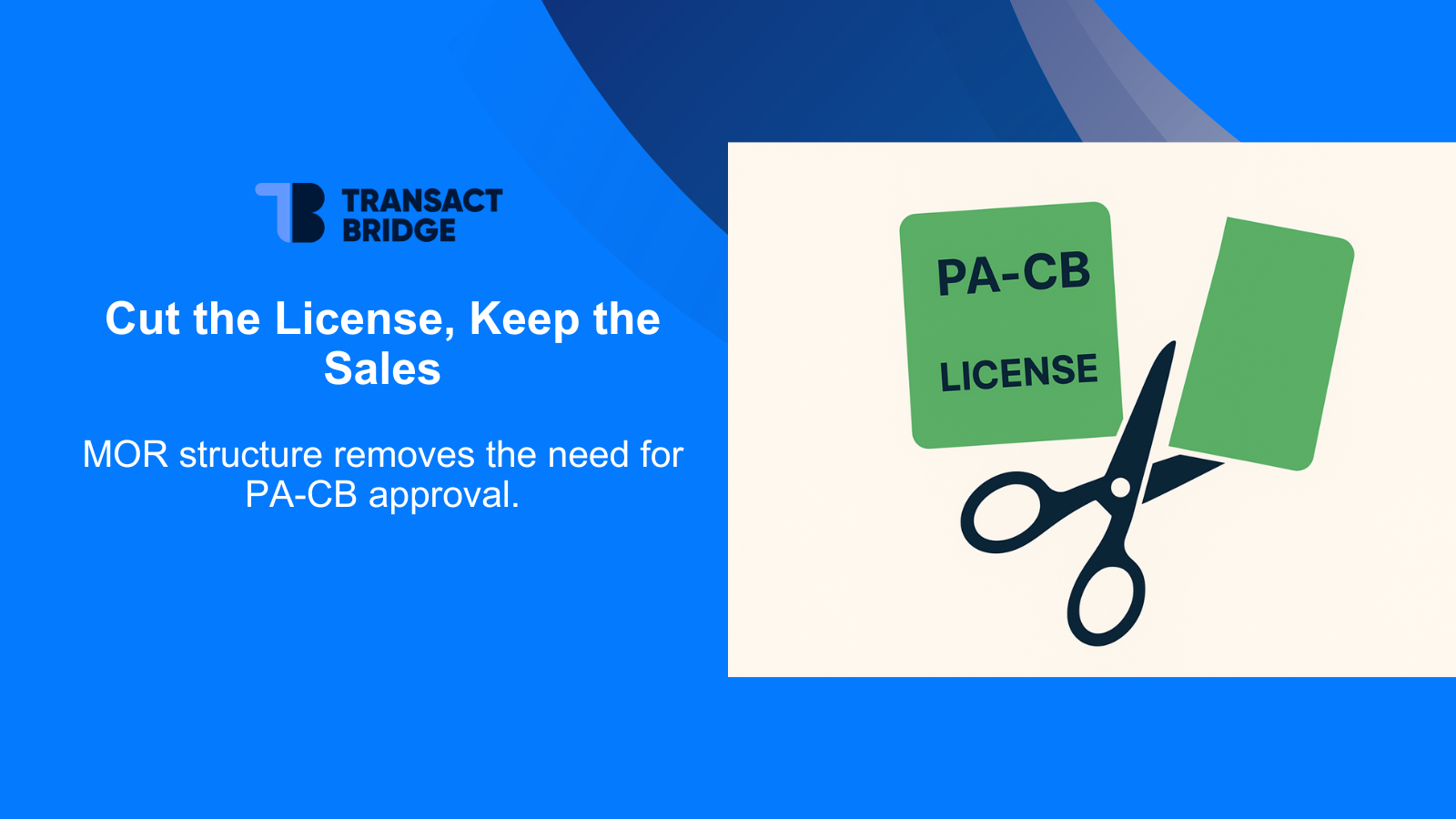
In the ever-evolving landscape of cross-border digital commerce, understanding regulatory compliance is crucial—especially in a tightly regulated market like India. With the Reserve Bank of India (RBI) imposing strict controls on how foreign merchants can engage with Indian customers, it’s easy to get entangled in legal jargon and complex licensing requirements.
A key point of confusion for many businesses entering India is the PA-CB license—the Payment Aggregator for Cross-Border transactions license. On the surface, it looks like a must-have if you're selling to Indian customers. But what if you could build a compliant, scalable business without needing one?
Enter Transact Bridge—a model designed to eliminate that licensing burden while still enabling seamless cross-border transactions into India. In this post, we’ll break down:
What the PA-CB license is and when it's required
How Transact Bridge sidesteps the requirement entirely
Why a Merchant of Record (MOR) structure matters—even if you do pursue licensing
A detailed comparison of operational responsibilities with and without an MOR
Let’s cut through the noise and get into it.
What is a PA-CB License?
The PA-CB (Payment Aggregator – Cross Border) license is a regulatory authorization under the RBI's framework that governs how entities collect and settle funds in cross-border commerce.
You're required to have a PA-CB license if:
You're collecting payments in India on behalf of a foreign merchant, and
You're settling those funds across borders, either inbound or outbound
This means if your business is acting as a payment intermediary—collecting payments from Indian consumers, and then remitting those funds to an overseas entity—you’re in RBI territory. This triggers the need for PA-CB licensing, compliance with FEMA (Foreign Exchange Management Act), and reporting via mechanisms like FIRA (Foreign Inward Remittance Advice) and FIRC (Foreign Inward Remittance Certificate).
Getting a PA-CB license is not a small feat. It involves:
Establishing a local presence in India
Registering with GST and other tax authorities
Ensuring KYC/AML compliance
Managing foreign exchange regulations and customs duties
Regular reporting to RBI and other agencies
For many international businesses, it’s overkill—especially if you're just trying to sell SaaS, games, subscriptions, or digital content to Indian users.
So, how can you avoid it?
How Transact Bridge Avoids the PA-CB Requirement
Transact Bridge was designed with a deep understanding of Indian regulatory frameworks, specifically RBI and FEMA regulations. It circumvents the need for a PA-CB license by not acting as a payment aggregator at all.
Instead, it operates under a Merchant of Record (MOR) model combined with a reseller structure.
Let’s unpack how that works.
The Reseller/MOR Model
Under this model:
Transact Bridge becomes the Merchant of Record in India
It sells digital goods or services directly to the Indian customer. To the buyer, Transact Bridge is the visible entity making the sale.It then purchases the product from the foreign service provider (you)
This is a B2B purchase where you (the foreign business) invoice Transact Bridge for the underlying product or service.
So the transaction flow is:
B2C Sale: Indian Customer ⇨ Transact Bridge
B2B Purchase: Transact Bridge ⇨ Foreign Seller
Since Transact Bridge is not collecting payments on your behalf, but rather making its own sale and separately paying you, it’s not a payment intermediary. Therefore, no PA-CB license is triggered.
Why This Works (Legally)
This setup aligns with RBI and FEMA regulations as long as three critical conditions are met:
1. Contracts Are In Place
There must be a formal agreement between Transact Bridge and the foreign service provider. This governs the B2B purchase, responsibilities, pricing, and service levels.
2. GST Is Complied With
Transact Bridge, as the Indian seller, collects and remits 18% IGST (Integrated Goods & Services Tax) on the digital sale. This is typically handled under OIDAR (Online Information Database Access and Retrieval) rules for digital services or regular B2C GST rules.
3. RBI & Customs Rules Are Followed
All forex remittances from India to the foreign seller are done in compliance with Indian laws—this includes proper documentation like Form A2, bank approvals, and accurate filing of FIRCs.
When structured this way, the transaction is clean, auditable, and entirely within legal bounds—without needing a PA-CB license.
The Real Value of a Merchant of Record (MOR)
Let’s say you decide to bite the bullet. You register for OIDAR, get a PAN, integrate local tax and invoicing, and even go for the PA-CB license. You’re now legally allowed to sell to Indian customers directly.
So—do you still need a partner like Transact Bridge?
Short answer: Yes, if you care about speed, cost, and simplicity.
Here’s a deeper dive into what you’re taking on by going solo vs. using a MOR:
Responsibility | You Handle (No MOR) | With Transact Bridge (MOR) |
GST Registration in India | Required (OIDAR or GST) | Not required |
Tax Collection & Remittance | You collect and remit IGST | Handled by Transact Bridge |
Local Invoicing (in INR) | Must issue yourself | Issued by Transact Bridge |
Customer Service / Legal Risks | Your liability | Managed by MOR |
RBI Remittance Process (FIRA/FIRC) | You handle it all | MOR handles end-to-end |
Local Compliance Monitoring | Your responsibility | MOR stays updated |
Technical Integration with Indian Gateways | Fully on your team | Shared or handled by MOR |
Currency Conversion & FX Rates | Your risk to manage | Managed and optimized by MOR |
Dispute Resolution / Refunds | You manage locally | Handled by MOR |
Even if you’re technically able to comply, managing all this in-house can be a major drain on time and resources.
Benefits of Using a MOR Like Transact Bridge
Let’s go deeper into why companies prefer to work with a MOR model even when they technically don’t have to.
1. Speed to Market
Transact Bridge already has all regulatory systems, infrastructure, and banking relationships in place. You can go live in weeks—not months.
2. No Need for Local Entity
Avoid the complexity of setting up a business presence in India. No PAN, no GST registration, no OIDAR headaches.
3. One Invoice, One Payment
You invoice Transact Bridge, and they take care of everything else—payment collection, compliance, tax, and delivery.
4. Lower Risk Exposure
All legal obligations toward Indian customers fall on the MOR. That includes customer service, refunds, disputes, and any future audits.
5. Better FX Rates and Remittance Management
Transact Bridge has optimized FX handling and documentation processes—ensuring your funds arrive quickly and cleanly, with all the paperwork (FIRA/FIRC) handled.
6. Ongoing Compliance Monitoring
Regulations in India change frequently—especially around digital taxation and foreign remittances. A local MOR stays up to date so you don’t have to.
7. Shared Technical Lift
Tech integration with local payment processors, tax engines, and invoicing tools can be shared or entirely handled by Transact Bridge.
When Going Direct Might Make Sense
To be fair, the MOR model isn’t for everyone.
If you’re a very large company with:
An Indian entity already set up
Internal legal, tax, and regulatory teams
A roadmap for local partnerships and infrastructure
...then registering for OIDAR, managing compliance, and even applying for a PA-CB license might be justifiable. You’ll have more control and possibly better margins, depending on your volume.
But for 95% of digital service providers entering India, the cost-benefit equation tips heavily in favor of using a local MOR.
Key Takeaways
A PA-CB license is only triggered when you're acting as a payment aggregator.
Transact Bridge avoids this by acting as a Merchant of Record (MOR) and importer/reseller in India.The MOR model is fully compliant when structured with the right contracts, GST registration, and RBI remittance flows.
Transact Bridge handles all of this end-to-end.
Even if you choose to register and go direct, using a MOR reduces overhead, speeds up deployment, and lowers legal and compliance risk.
Final Thoughts
Selling into India doesn’t have to be a legal minefield. With the right structure, you can remain fully compliant with RBI, FEMA, and GST rules—without applying for a burdensome PA-CB license.
Transact Bridge offers the best of both worlds:
A compliant, tax-optimized, and legally clean way to serve Indian customers
Without the burden of setting up a local entity or chasing licenses
If your goal is to test, scale, or streamline your India go-to-market strategy, partnering with a Merchant of Record like Transact Bridge is the smart move.
Need help structuring your India entry?
Let’s talk with Transact Bridge Expert. We’ll walk you through the setup, paperwork, and integration options tailored to your business.





